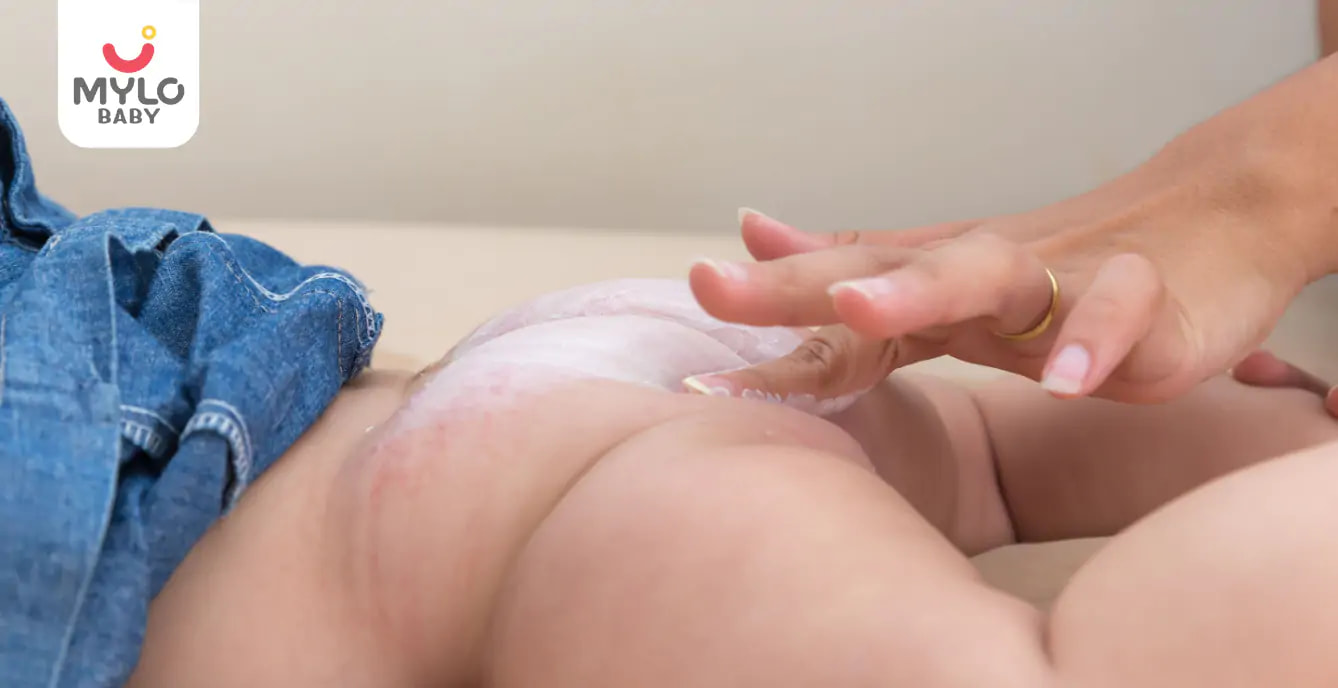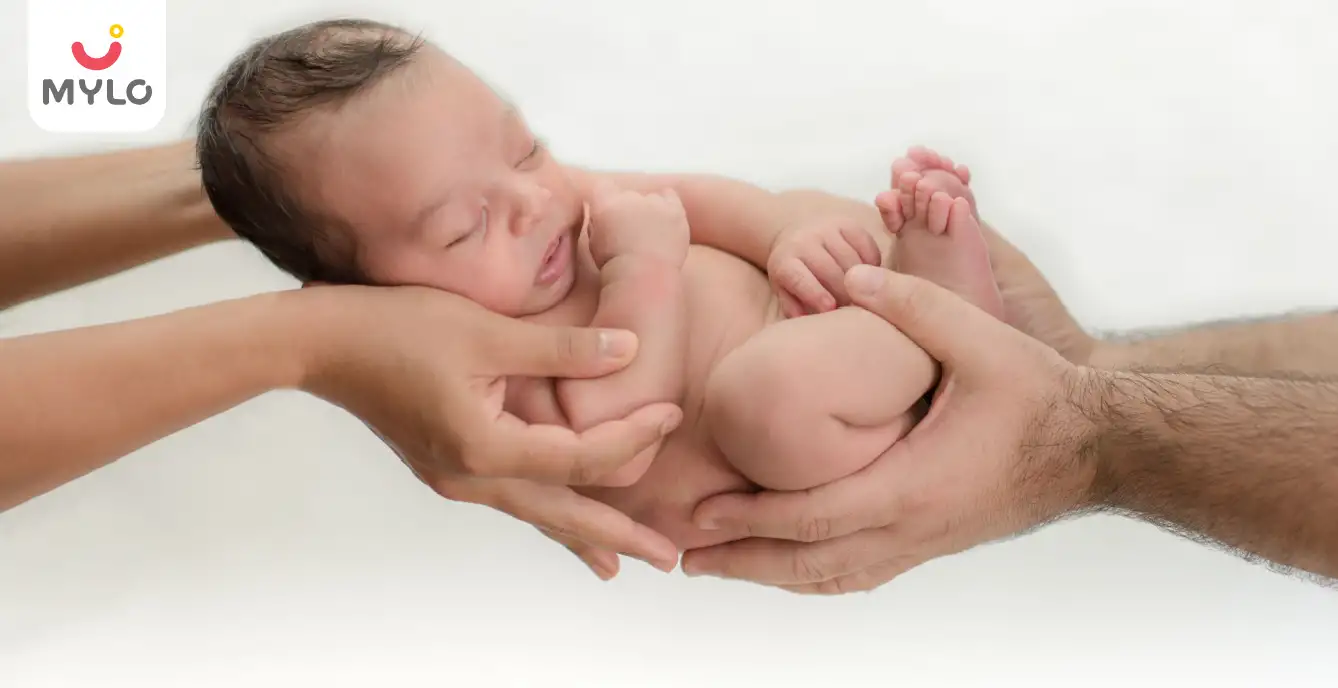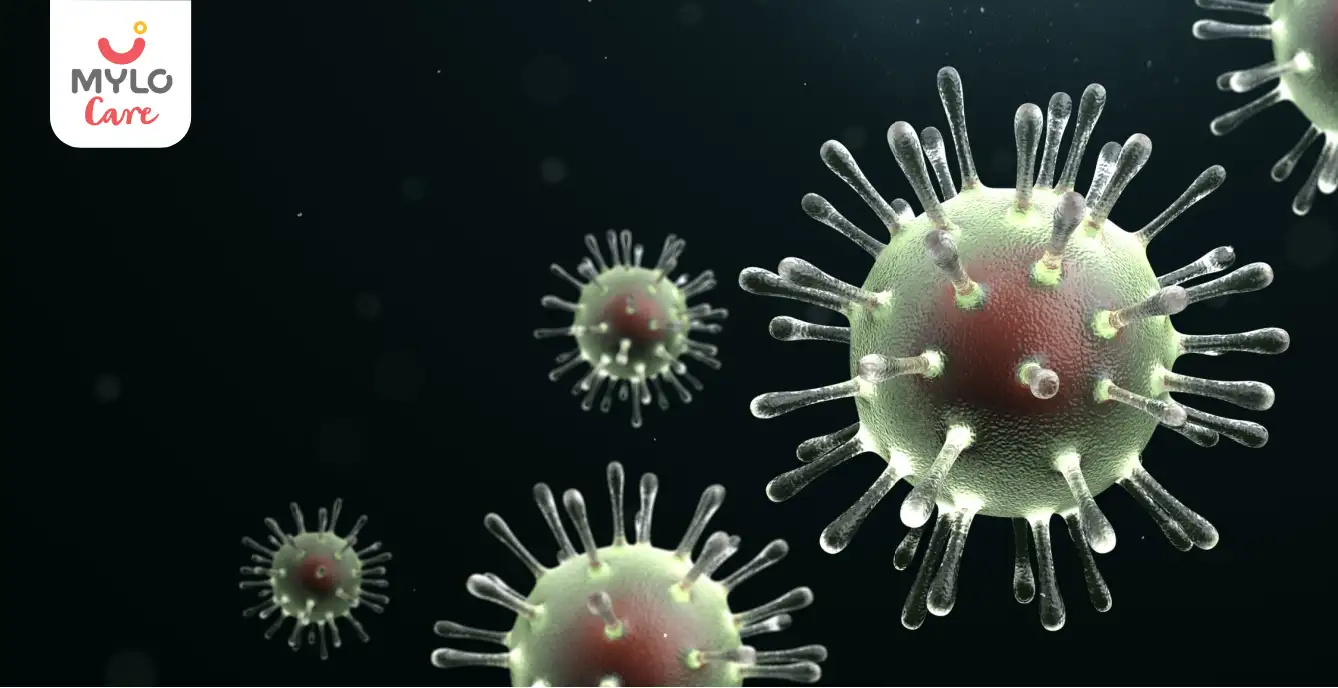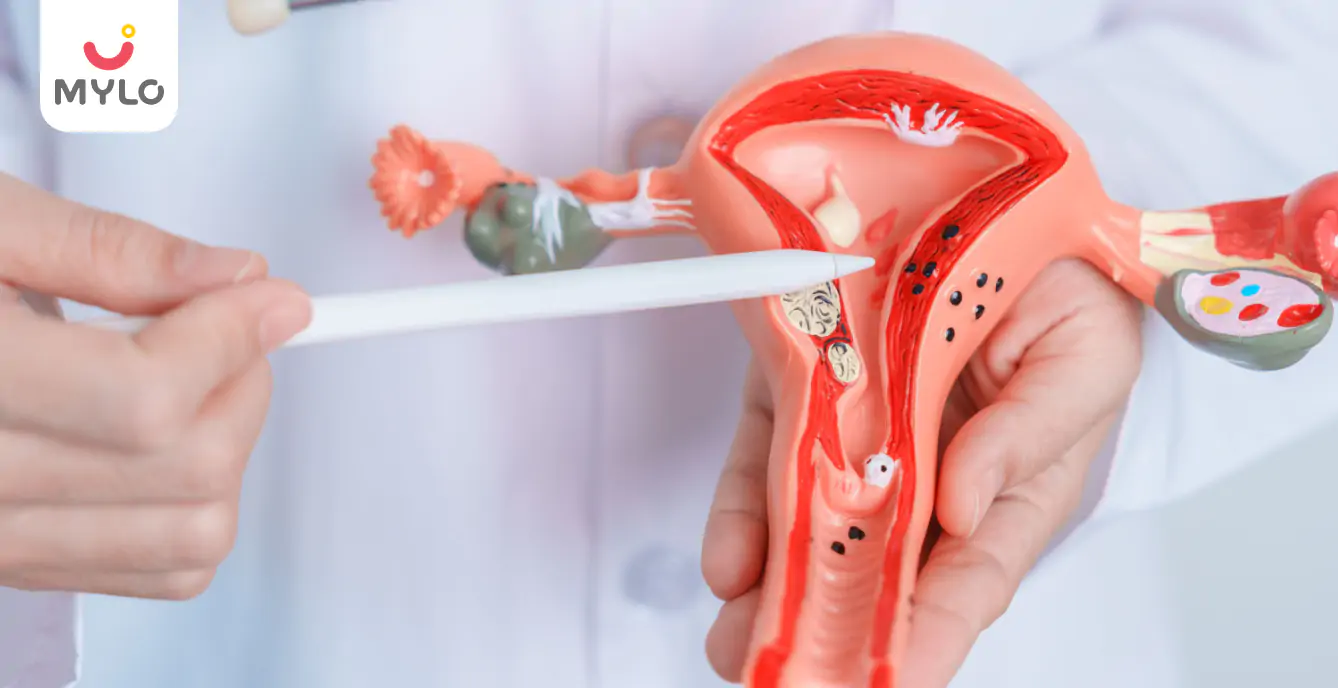Home

Nappy Rash: Your Ultimate Guide to Symptoms and Quick Relief
In this Article

Baby Care
Nappy Rash: Your Ultimate Guide to Symptoms and Quick Relief
Updated on 22 November 2023
In the delicate world of parenting, every giggle, coo, and even the tiniest tear carries immense significance. Amidst the joy, however, there are those challenging moments that every parent must navigate – and few things can be as distressing as seeing your little one uncomfortable due to nappy rash. It's a common woe that often catches parents off guard, leaving them searching for answers and quick relief.
In this article, we will understand its symptoms and, most importantly, provide you with a roadmap to swift and effective relief.
What are Some Common Nappy Rash Symptoms?
Let us understand some common symptoms of nappy or diaper rash in babies:
1. Redness and Inflammation
The affected area appears red, irritated, and inflamed, often in the diaper region.
2. Raised Bumps or Pimples
Small bumps, sores, or pimples may develop, causing discomfort and tenderness.
3. Warmth to the Touch
The affected skin may feel warmer than usual due to the inflammation caused by the rash.
4. Peeling or Flaking Skin
In severe cases, the skin might peel or flake, indicating a more advanced stage of nappy rash.
5. Crying or Irritability
Infants may express discomfort or irritability due to the itching and soreness caused by the rash.
6. Foul Odor
A pungent smell might emanate from the affected area due to the rash exacerbating the skin's condition.
7. Spreading Rash
The rash can quickly spread beyond the diaper area, affecting the thighs, stomach, or back.
You may also like: Newborn Diaper Rash: Causes, Treatment and Prevention Tips
What are the Causes of Nappy Rash?
Let us now understand the factors that can lead to a diaper rash in babies:
1. Prolonged Exposure to Moisture
Keeping a wet or soiled diaper on for extended periods can irritate the skin, leading to nappy rash.
2. Friction or Rubbing
Constant rubbing of the diaper against the skin, especially during movement, can cause irritation and rash development.
3. Sensitive Skin
Some babies have more sensitive skin, making them prone to developing nappy rash more easily.
4. Bacterial or Fungal Infections
Yeast infections, particularly candida, can thrive in moist environments, contributing to nappy rash.
4. Introduction of New Foods
Introducing solid foods or changes in diet can sometimes trigger nappy rash due to changes in bowel movements.
5. Chemicals or Fragrances
Certain chemicals or fragrances present in wipes, diapers, or detergents might irritate the baby's delicate skin.
6. Antibiotic Use
Antibiotics can disrupt the balance of good bacteria in the gut, leading to diarrhea and subsequently causing nappy rash.
You may also like: Can Rashes Be Prevented While Using Disposable Diapers for Your Baby?
What are Some Effective Nappy Rash Treatment Options?
Here are some ways to provide quick relief and treat your baby’s rash:
1. Frequent Diaper Changes
Regular changing of diapers, especially when wet or soiled, helps keep the skin dry and reduces irritation.
2. Gentle Cleansing
Use mild, fragrance-free baby wipes or warm water to clean the diaper area. Avoid harsh soaps or wipes with alcohol.
3. Air-Drying Time
Allow the skin to air dry completely before putting on a fresh diaper to reduce moisture and promote healing.
4. Barrier Creams
Apply a thick layer of nappy rash cream containing zinc oxide or petroleum jelly to create a protective barrier and aid healing.
5. Seek Medical Advice
In severe cases or if the rash persists despite home remedies, consult a healthcare professional for further evaluation and treatment.
You may also like: Diaper Rash Treatment Tips for Your Baby
How to Choose the Right Nappy Rash Cream?
To prevent nappy rash symptoms from recurring and to treat existing rash, you can invest in an anti-rash cream. Here’s how to choose the best one:
1. Look for Active Ingredients
Zinc oxide, lanolin, or petroleum jelly are effective ingredients known to soothe and protect irritated skin.
2. Fragrance-Free Formulas
Avoid creams with added fragrances, as these may further irritate sensitive skin.
3. Ease of Application
Choose a cream that is easy to apply and remove without causing further discomfort to your baby.
4. Consider Your Baby's Skin Sensitivity
Opt for hypoallergenic or specifically formulated creams for sensitive skin.
5. Consult with a Healthcare Professional
If unsure, seek advice from a pediatrician or dermatologist to select the most suitable cream for your baby's needs.
Final Thoughts
Nappy rash can be distressing for both infants and parents, but with prompt attention and the right care, it's manageable. Understanding the symptoms, causes, and effective nappy rash treatment options is crucial for providing quick relief and preventing future occurrences. Remember, maintaining good hygiene practices, using appropriate creams, and seeking medical advice when needed are key steps in managing nappy rash and ensuring your baby's comfort.
References
1. Benitez Ojeda AB, Mendez MD. (2023). Diaper Dermatitis. In: StatPearls [Internet]. Treasure Island (FL): StatPearls Publishing
2. Lebsing S, Chaiyarit J, Techasatian L. (2020). Diaper rashes can indicate systemic conditions other than diaper dermatitis. BMC Dermatol.



Written by
Anandita Sharma
Drawing on more than a decade of expertise in administration, Anandita Sharma currently serves as a content operations e
Read MoreGet baby's diet chart, and growth tips

Related Articles
Related Topics
RECENTLY PUBLISHED ARTICLES
our most recent articles

Periods
How to Get Periods Immediately to Avoid Pregnancy?

Loss of Appetite During Pregnancy: Causes and Solutions

Caring for your Newborn
How to Increase Newborn Baby Weight: Expert Tips and Tricks

Medications
Fertisure M: The Comprehensive Solution to Male Infertility and Reproductive Health

Coronavirus and Pregnancy
All You Need to Know About the New COVID Variant: Pirola

Fertility Problems
Endometrial Polyp and Pregnancy: How Uterine Polyps Can Affect Your Chances of Conception
- How to Stop Heavy Bleeding During Periods: Home Remedies (Part 2)
- How Many Times Should You Have Sex to Get Pregnant?
- A Guide to Planning the Perfect Godh Bharai for the Mom-to-Be
- Your Complete Guide to Spinal Anesthesia: From Preparation to Recovery
- Custard Apple During Pregnancy: Benefits & Risks
- 30+ Baby Bump Photos and Ideas for Documenting Your Pregnancy
- 30+ 2nd Pregnancy Photoshoot Ideas for Expecting Parents
- Feeding Tips and Healthy Food Ideas for Your 7-9 Month Old Baby
- Sweet Potato During Pregnancy: Benefits, Risks & Side Effects
- Carrot During Pregnancy: How This Healthy Snack Can Help You and Your Baby
- 30+ Maternity Photoshoot Props: Accessories for Maternity Photoshoot
- Diaper Pants 101: Everything You Need to Know Before You Buy
- Can We Eat Curd During Periods: Understanding the Dairy Dilemma
- Sabja Seeds During Pregnancy: Benefits & Side Effects


AWARDS AND RECOGNITION

Mylo wins Forbes D2C Disruptor award

Mylo wins The Economic Times Promising Brands 2022
AS SEEN IN
















- Mylo Care: Effective and science-backed personal care and wellness solutions for a joyful you.
- Mylo Baby: Science-backed, gentle and effective personal care & hygiene range for your little one.
- Mylo Community: Trusted and empathetic community of 10mn+ parents and experts.
Product Categories
baby carrier | baby soap | baby wipes | stretch marks cream | baby cream | baby shampoo | baby massage oil | baby hair oil | stretch marks oil | baby body wash | baby powder | baby lotion | diaper rash cream | newborn diapers | teether | baby kajal | baby diapers | cloth diapers |








